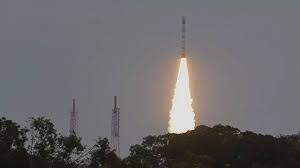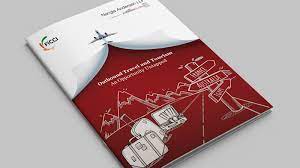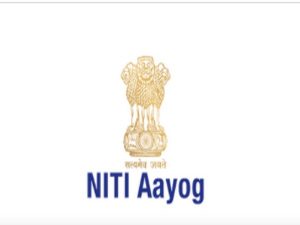Today Current Affairs: 9th August 2022 for UPSC IAS exams, State PSC exams, SSC CGL, State SSC, RRB, Railways, Banking Exam & IBPS, etc
Table of Contents
One District-One Product (ODOP):

Commerce and Industry Minister Piyush Goyal has unveiled the digital version of the One District-One Product (ODOP) gift catalogue during the Export Promotion Councils and Industry Associations meeting at Vanijya Bhawan, New Delhi.
- On the occasion, Mr Goyal highlighted the ways in which the ODOP gift catalogue is a step towards realizing the potential of all districts in the country and will give global recognition to the country’s diverse indigenous products.
- He urged all the line ministries, Industry Association, and Export Promotion Councils to utilize products from the catalogue for encouragement to designs and branding.
- The Minister said that utilizing products from the catalogue will promote a brand image for local products in the international market.
- The ODOP gift catalogue includes a wide range of products like Fragrances and Oils, Indian Spirits, Home Decor products, Fabrics, and Silks and Shawls.
Akasa Air:

First Flight of Akasa Air from Mumbai to Ahmedabad inaugurated.
- Akasa Air is the 7th schedule airline with brand name of SNV Aviation having Corporate Headquarters at Mumbai with Boeing Max – 8 aircraft.
- Akasa Air plans to be a low-cost carrier with single fleet and all economy seats.
- Akasa Air is planning to expand its activities to 72 aircrafts in next five years which will significantly enhance the domestic aviation services in India.
- Akasa Air is the first major airline to take to the skies in seven years since Tata Sons- Singapore Airline joint venture Vistara started operations in 2015.
- Though there have been several new regional carriers, some have shut shop, and a few others have suspended flights due to cash crunch.
- The airline is founded by billionaire Rakesh Jhunjhunwala along with aviation veterans Vinay Dube, who was the CEO of Jet Airways until it closed down in April 2019, and Aditya Ghosh, who earlier helmed IndiGo.
SSLV-D1-EOS 02:

The Indian Space Research Organisation Chairman S Somanath has said that the maiden launch of the Small Satellite Launch Vehicle, SSLV failed to place the satellites in the intended orbit due to sensor anomaly.
- SSLV-D1-EOS 02 launched from Sriharikota launch pad had placed the satellites into 356kmX76 kms elliptical orbit instead of 356 km circular orbit.
- Due to which the two satellites remained unstable and are no longer usable.
- The ISRO Chairman has said the launch vehicle took off majestically at the intended time from the launch pad in Sriharikota.
- Its propulsion stages, overall hardware, aerodynamic design and new generation electronics, the separation system used for the first time performed very well.
- However after reaching an altitude of 356 kms there was a failure of logic to identify sensor failure and go for the salvage motion.
- Hence the launch vehicle developed an anomaly.
- The ISRO Chairman has said that a team of experts will go deeper to find out the reason for this isolation.
- He emphasised that after a small correction and revalidation, SSLV-D2 will be launched very soon.
Outbound Travel And Tourism – An Opportunity Untapped:

A report was released titled ‘Outbound Travel and Tourism – An Opportunity Untapped’, which shows India’s outbound tourism will surpass USD 42 billion by 2024.
- Outbound tourism is the act of travelling ‘out’ of the home country for the purposes of tourism.
Findings of the Report:
- The Indian outbound travel market is among the fastest growing markets globally with approximately 80 million passport levels of purchasing power, especially among the middle class.
- With a growing economy, young population, and growing middle class, India is ideally positioned to become one of the most lucrative outbound tourism markets in the world.
- Europe sees 20% of the travellers from India’s outbound traffic. 10 % travel to Australia and New Zealand, while the rest of the traffic is towards Southeast Asia.
- In 2021, Indians spent approximately USD 12.6 billion in outbound trips, compared to USD 22.9 billion in 2019.
- While the reason for decrease in spending could be due to the pandemic, these figures point out the huge value that can be captured from Indian outbound travellers.
- India’s Tourism is ranked at 10th position in terms of its contribution to World GDP (Gross Domestic Product) in the World Travel and Tourism Council’s report in 2019.
- During 2019, contribution of travel & tourism to GDP was 6.8% of the total economy, Rs. 13,68,100 crore (USD 194.30 billion).
- India as of now in 2021 has 40 sites listed under ‘World Heritage List’, 6th highest (32 cultural, 7 natural and 1 mixed site) in the world.
- Dholavira and Ramappa Temple (Telangana) are the latest ones.
- In FY20, the tourism sector in India accounted for 39 million jobs, which was 8.0 % of the total employment in the country. By 2029, it is expected to account for about 53 million jobs.
Governing Council Of NITI Aayog:

Addressing the seventh meeting of the Governing Council of NITI Aayog at Rashtrapati Bhawan Cultural Centre, New Delhi, the Prime Minister Narendra Modi heralded the collective efforts of all the States in the spirit of cooperative federalism as the force that helped India emerge from the Covid pandemic.
- The Governing Council discussed the agenda items which included crop diversification and achieving self-sufficiency in oilseeds, pulses and agri-commodities, implementation of the National Education Policy and urban governance.
- In his closing remarks, the Prime Minister said that each state should focus on promoting its 3Ts, Trade, Tourism, Technology, through every Indian Mission around the world.
- This was the first physical meeting of the Governing Council since the onset of the pandemic, with the 2021 meeting held via video conferencing.
- The meeting was attended by 23 Chief Ministers, 3 Lieutenant Governors and 2 Administrators and Union Ministers.
- The meeting was moderated by Defence Minister Shri Rajnath Singh.
First Woman Director General Of The Council Of Scientific And Industrial Research:

Senior electrochemical scientist Nallathamby Kalaiselvi has become the first woman director general of the Council of Scientific and Industrial Research.
- Kalaiselvi’s research work of more than 25 years is primarily focused on electrochemical power systems and in particular, development of electrode materials, and electrochemical evaluation of in-house prepared electrode materials for their suitability in energy storage device assembly.
- Kalaiselvi also made key contributions to the National Mission for Electric Mobility. She has more than 125 research papers and six patents to her credit.
CSIR:
- Council of Scientific and Industrial Research (CSIR) is the largest research and development (R&D) organisation in India.
- CSIR has a pan-India presence and has a dynamic network of 37 national laboratories, 39 outreach centres, 3 Innovation Complexes and 5 units.
- CSIR is funded by the Ministry of Science and Technology and it operates as an autonomous body through the Societies Registration Act, 1860.
Iran Nuclear Deal:

There has been a fresh round of talks over Iran’s nuclear programme in Vienna to revive the 2015 nuclear deal which is also known as the Joint Comprehensive Plan of Action (JCPOA).
- Officials from various countries including Iran were meeting for the first time since March 2022.
- The Joint Comprehensive Plan of Action aims to guarantee the civilian nature of Iran’s nuclear programme in exchange for a gradual lifting of sanctions.
- Iran signed the agreement with the five permanent members of the U.N. Security Council — the U.S., Russia, France, China, and the United Kingdom — as well as Germany and the European Union.
- Under the deal, Iran agreed to significantly cut its stores of centrifuges, enriched uranium and heavy-water, all key components for nuclear weapons.
- Iran also agreed to implement a protocol that it would allow inspectors from the International Atomic Energy Agency (IAEA) to access its nuclear sites to ensure Iran would not be able to develop nuclear weapons in secret.
Ten More Ramsar Sites Added:

India has added 10 more Ramsar sites, or wetlands of international importance (taking the total number of such sites to 64)
Ten sites are:
- Koonthankulam Bird Sanctuary (TN): It is the largest reserve for breeding resident and migratory water birds and an Important Bird and Biodiversity Area forming part of the Central Asian Flyway.
- Gulf of Mannar Marine Biosphere Reserve (TN): This will be the first Marine Biosphere Reserve in South & South -East Asia.
- Vembannur Wetland Complex (Kanya kumari, TN): It is an artificial human-made inland tank and part of the Important Bird and Biodiversity Area (IBA). It forms the southernmost tip of peninsular India.
- Vellode Bird Sanctuary (TN): It lies near the temple town of Erode in the State of Tamil Nadu and is considered a paradise for bird lovers.
- Vedanthangal Bird Sanctuary (TN): This also comes under the Important Bird and Biodiversity Area (IBA).
Udhayamarthandapuram Bird Sanctuary (TN): Notable species observed at the site are oriental darter, glossy ibis, grey Heron & Eurasian spoonbill. - Satkosia Gorge (Odisha): The wetland is located over the Mahanadi River. Satkosia is the meeting point of the Deccan Peninsula and the Eastern Ghats (two biogeographic regions of India), thus is a very important place for biodiversity.
- Nanda Lake (Goa): The lake in South Goa had already been notified as a wetland. This will be Goa’s 1st Ramsar site.
- Ranganathittu Bird Sanctuary (Karnataka): It is a bird sanctuary in the Mandya District of the state of Karnataka in India. It is the largest bird sanctuary in the state on the bank of the Kaveri River. It is designated as an Important Bird area (IBA).
- Sirpur Wetland (Madhya Pradesh): Situated on the Sirpur Lake (created by the Holkars of Indore State in the early 20th century), the wetland is situated in Indore City.
- Previously, 5 new sites were added: Three wetlands (Karikili Bird Sanctuary, Pallikaranai Marsh Reserve Forest & Pichavaram Mangrove) in Tamil Nadu, one (Pala wetland) in Mizoram and one wetland (Sakhya Sagar) in Madhya Pradesh.
Ramsar convention:
It is an international treaty for the conservation and wise use of wetlands.
It is named after the Iranian city of Ramsar, on the Caspian Sea, where the treaty was signed on 2 February 1971.
Known officially as ‘the Convention on Wetlands of International Importance especially as Waterfowl Habitat’ (or, more recently, just ‘the Convention on Wetlands’), it came into force in 1975.
Montreux Record:
Montreux Record under the Convention is a register of wetland sites on the List of Wetlands of International Importance where changes in ecological character have occurred, are occurring, or are likely to occur as a result of technological developments, pollution or other human interference.
It is maintained as part of the Ramsar List.
Coral Reefs In Great Barrier Reef:

According to the Australian Institute of Marine Science’s (AIMS) annual long-term monitoring report, Australia’s northern and central Great Barrier Reef (GBR) has experienced high levels of coral reef cover over the past 36 years.
- The researchers also warned that the gains could be quickly reversed due to rising global temperatures.
Key highlights of Report:
- It states that reef systems are resilient and capable of recovering after disturbances such as accumulated heat stress, cyclones, predatory attacks.
- It shows record levels of region-wide coral cover in the northern and central GBR since the first ever Australian Institute of Marine Science (AIMS) survey was done.
- Coral cover is measured by determining the increase in the cover of hard corals.
- The hard coral cover in northern Great Barrier Reef had reached 36% while that in the central region had reached 33%.
- Meanwhile, coral cover levels declined in the southern region from 38% in 2021 to 34% in 2022.
- The high level of recovery is fueled by the increase in the fast-growing Acropora corals, which are a dominant type in the Great Barrier Reef.
- Incidentally, these fast-growing corals are also the most susceptible to environmental pressures such as rising temperatures, cyclones, pollution, crown-of-thorn starfish (COTs) attacks which prey on hard corals and so on.
- Also, behind the recent recovery in parts of the reef, are the low levels of acute stressors in the past 12 months — no tropical cyclones, lesser heat stress in 2020 and 2022 as opposed to 2016 and 2017, and a decrease in COTs outbreaks.
Article 370 And Article 35A:

Three years of abrogation of Art 370 and Art 35A in Jammu and Kashmir.
- Article 370 conferred on J&K the power to have a separate constitution, a state flag, and autonomy of internal administration.
- Article 35A: It empowered the Jammu and Kashmir state’s legislature to define “permanent residents” of the state and provide special rights and privileges to them.
- Under Constitution (Application to Jammu and Kashmir) Order, 2019: It made provisions of the Indian constitution applicable in the state of J&K.
- All provisions which separated the Constitution of J&K were abrogated (35A was automatically scrapped)
- Under the J&K reorganization Act, 2019: The state was reorganized into two UTs – J&K (with legislature) and Ladakh (without Legislature)
- Impact : J&K cannot maintain a separate flag, Ranbir Penal Code replaced with IPC, all the provisions of the Indian Constitution now automatically apply to J&K as well, and Law and order incidents have seen a drastic reduction.
India Seed Fund Scheme:

Commerce and Industry ministry launched this scheme in 2021 to provide financial assistance to eligible startups (DPIIT chosen) through incubators for proof of concept, prototype development, product trials and commercialization.
- Eligibility: A startup, recognized by DPIIT, incorporated not more than 2 years agoat the time of application and should not have received more than 10 lakhs of monetary support under any other Central or State Government scheme.
- Features: Grants of up to 5 crores to eligible incubators, they in turn will provide up to Rs. 20 lakh(for proof of concept, prototype development, or product trials to startups) and up to Rs. 50 lakh (for market entry, commercialization, or scaling up) to eligible startups.
- Startup India Initiative: Started in 2016, it envisages building a robust Startup ecosystem in the country for nurturing innovation and providing opportunities to budding entrepreneurs.




